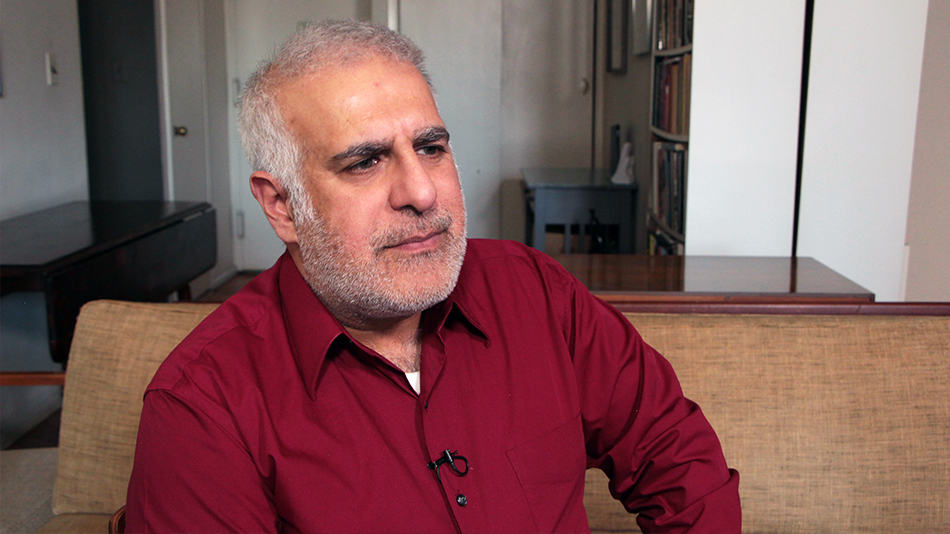
1970: Gay 10-Year-Old Boy Finds Creative Way To Convince Mom To Buy Teen Magazines
Well, I grew up in a small town called Randolph, Massachusetts, which is about 15 miles south of Boston. Probably October of 1970, I was 10 years old and it was a Friday and on Fridays, I would usually go with my mother shopping. And I remember going to the first national supermarket with her in town, and as we were leaving, we passed a newspaper stand or a newsstand and there were all these magazines. And one magazine caught my eye in particular. It was – had a bunch of little cartoons on the cover with the photos of the teen stars of the day. And the teen stars of the day were David Cassidy, Bobby Sherman, and Donny Osmond. And at this point I had a slight awareness of my sexuality and I knew that I wanted to know more about these pretty boys.
I was like, “Ma, can I buy that?” Or “Can you buy that for me?” And it was 35 cents, this copy of 16 Magazine, which was a teen fan magazine at the time, and it was the December 19, 1970 issue which came out in October. And she didn’t say anything. She did put down 35 cents and I got to take it home.
And then somehow I got this idea, well, I do – I wanna make a magazine like this. I want to sort of mimic it but, at the same time, I had to maintain the charade that I was better than this magazine.
So I ended up doing these magazines that were parodies of the teen magazines. I would cut out photos of teen stars and put them in these magazines that I’d make. I started to write them and then I thought, I think, other people would like these so I actually started to sell them on the playground at school.
The girls loved them. They – it was fun, it was naughty, and I just, you know, I addressed issues like teen pregnancy and drugs. Anything to get a rise out of people and anything so that I could continue to read these magazines. You could be guaranteed of at least one photo of a shirtless boy in these magazines.
I was making these magazines for about 3 or 4 girls on the playground, you know, in elementary school and in fact, one girl bought an entire subscription of 12 issues. This went on from fifth grade through sixth grade and then junior high, seventh grade, I made the last one probably in the fall of my junior high, my seventh grade. And if I think back as to why I stopped making the magazines, it may be because I started to have sex with another boy, another peer, at that time, so maybe I finally fulfilled what I was always looking for, so there’s no need to create the magazines anymore. But I also knew that it was not cool because by then the word “fag” was being thrown around in school.
The thing about these magazines, it shows how ingenious or how desperate or how creative somebody can be when they want to get in touch with their sexuality but they know that society around them doesn’t allow that.
Anybody of any age can be aware of their sexual orientation and want to get in touch with it and that we should not dismiss the notion that somebody who is even 5 or 6, a little boy who’s 5 or 6, suddenly declares “I like other boys.” You know, perhaps parents are more likely to say, “Oh, you’re so young. You don’t really know yet.” Well, I knew. You know, and I would think that everyone else who declares that knows. And I think it’s just a reminder that something as basic and essential as sexuality and sexual orientation really does come to you very early.
1982: Following Homophobic Police Taunt And Arrest, AIDS Activist “No Longer Believed The Police Only Arrest Bad People.”
I graduated college in May of 1982 and a friend of mine said that he would help me start with my big New York City adventure, because I knew I always want to move to New York City, and he would – his parents would give me free room and board for the summer while I got up on my feet and got my first job. And that was exciting, except that my friends parents were German immigrants who were very, very regimented, and very authoritative, and they had various ideas about how life should be and shouldn’t be. And unfortunately, one of those was that gay people were bad.
And my friend, who is straight and supportive of me, said, “You can stay with us and everything will be cool, but I gotta warn you that you have to be closeted.” And so that was a little bit of a spiritual dilemma for me because I’m out of college. I can finally be my own person but, sorry, we gotta maintain the charades a little bit more. You know, you gotta keep it under wraps. But when I wasn’t at their home on the Upper West Side, I was out in the streets and I was experiencing the gay male life of New York City. I was going to bars and I was going to clubs and I was cruising guys in the street and it was, you know, it was like Candyland. It was really, really exciting.
Now I was coming from a not so sophisticated little town in Massachusetts and I was in the big city. So it was a giddy time, it was an exciting time. I found Christopher Street. I don’t know whether somebody said, “Well, if you really want to know where the action is, go to Christopher Street.” Christopher Street in the West Village was the nerve center of the gay community. It’s where everybody hung out. The streets were lined with bars and clubs and backroom bars and peep shows. Everything was there or the street was there and you could cruise somebody on the street and get to make some new friends. Or go down to the pier where, you know, the kids were dancing and hanging out and learning to vogue. You know, there’s just – it was so vibrant in the eighties.
And so I found my way to Christopher Street and the bars close at 4:00 AM. So you got a lot – you could get a lot done on any given day. I usually waited until the weekends and I remember one particular weekend, one Saturday night in the late summer of 1982, I had not scored a date. And so I was walking up Christopher Street coming back to Seventh Avenue, ready to take the number 1 train up to the Upper West Side where I was staying. And so I was walking and I noticed a cop car was driving so slowly down the street towards us, at us, but just driving down the street. And the reason why that caught my eye is because the light was on in the car and I could see the two guys in the car. One of them had – was speaking through a loudspeaker so that it was coming out, you know, into the environment. You know, it was – he was broadcasting.
And I suddenly heard him say, “Okay, faggots, time to go home.” Saying it like a little kid teasing you all the playground, but this was a cop. And I turned to somebody next to me.
I said, “Did you hear what he just said?” I was incensed , you know, and he looked to me.
He said, “Yeah.” He just shrugged. He said, “The cops do that.” So this is where I had this awakening. This little suburban kid who thought that everything was wonderful and that the cops were our friends suddenly realizing that even the cops were against us. The guys whose jobs we paid taxes to maintain were the same people who were treating us badly. They’re the ones who are supposed to be protecting us from many homophobic attacks and yet they’re just as bad as our attackers. So that really stuck with me and that was one of the first bitter lessons that I learned about everyday life in the gay community.
I think that experience, you know, not only disillusioned me but also hardened to me and perhaps laid the groundwork for me to become an AIDS activist years later. So that when I became an AIDS activist and I was involved in protests where I was arrested by the police, I knew that I was the good guy and I no longer believed that the police only arrest bad people. I realized that the police are just as crooked and that they are people who I could fight against, that I had to be resistant against, that they were not part of the good equation. They were part of the bad equation.
1983: Gay Man Transitions From Bathhouse Towel Boy To AIDS Activist.
Being a gay man of 22 years old in New York City is an experience for anybody. It’s learning who you are, it’s learning what the community is. And this particular time that I was 22 in New York City was the spring of 1983. And I was doing exciting stuff. I was actually a producer of a TV show at the time on Manhattan cable that was dedicated to exploring gay life and lesbian life in New York City. And it was called “Our Time” and the most exciting thing about it is that the host was a man named Vito Russo. Vito Russo was a renowned activist and the author of the seminal book called “The Celluloid Closet.”
The job that I had was really an internship, which meant that every 2 weeks I got $45. And that $45 was only to cover my lunch and the subway. And I’d been doing this for a while because I loved it but I got to the point where I had to jump subway turnstiles because I did not have enough money in my pocket.
And I finally went to Vito one day and I said, “I love you. I love this job. It’s killing me!”
So Vito said, “I’m really sorry. I knew that you were struggling. Listen. Why don’t you do what I did? When I was working on ‘The Celluloid Closet,’ when I was writing the book and I didn’t have any money, I took a job. And I could probably get you a job there, too.”
I said, “Where?”
He said, “The St. Mark’s Baths.” With the recommendation of Vito, I was told to call upon the manager of the St. Mark’s Baths one night and he took a look at me and he probably asked me if I’d ever been in the bathhouse before. I said no and he found that charming.
He said, “Okay, you can be a towel boy.” A towel boy is somebody who stands at the head of the stairs which is the entrance to all the little rooms where you can rent for a night or a few hours. On one arm like this, I’m holding a nice clean white towel, just laundered, and in this hand, I am holding a cup of lubrication. Lube. And this is how I greet the men who come upstairs from the registration of the St. Mark’s Baths. What they didn’t see is after they had finished doing their business, I had to clean each room. Not as elegant. So I did that for one night and I guess my genteel small town sensibilities were shaken up a little bit.
And so the next night, I went back to my manager and I said. “I really like it here, but I don’t know if I could take it being a towel boy again.”
And I guess he did take a shine to me because he said, “I’m gonna put you down in registration.” I thought, oh, that’s great, I don’t have to clean up, you know, dirty sheets anymore or hand out lube. I was very happy.
It was the spring of 1983. AIDS was just beginning to become a very mainstream gay thing and I remember seeing a poster that appeared on the streets of New York City saying, “First AIDS candlelight vigil.” And so the candlelight vigil poster said be at Christopher Street and we’re going to march down to a government building. I went with a couple of friends and we felt, you know, really engaged. We felt like we were doing something. We were taking a stand. I just felt really swept up in it. I felt like I wanted to do something and I wanted to help make a change.
At the end, the event finished and I was standing around and for some reason I didn’t have a watch with me and I called out to the crowd around me, “Does anybody know what time it is? I have to get back to my job at the baths.” Silence.
People looked to me in a scowl and somebody said, “You work at the baths? That’s where AIDS is.” Because that’s where the epidemic got started. It was the early days of the epidemic and we were going on fear and panic and, you know, a certain amount of judgment. It was because I was suddenly this aware person. I thought, oh my God, that’s right! I’m doing something that is anathema to helping, to stop this epidemic. I’m working somewhere which is sort of ground zero for AIDS. Which I was wrong about, but as I said that was my naivete at the time. And so I made it a point to that I was not going to work there again.
I probably worked at the baths for about three months at the most and I was getting a summer job out on Fire Island, so I used that as the sort of smoke screen for leaving the job. Because I was getting this job as the co-editor of “The Fire Island News” at the time.
And so I told him that I just had this other job and he knew that I was a writer and so he wished me well and I said, “Well, you know, I might come back in the fall.” I was trying to placate him.
He said. “No, don’t worry about it.” He said, “I know where your career is going and I know that this isn’t where it is, so, you know, glad that you worked with us.”
When people ask me to recall my life as an AIDS activist and as a gay activist, as a gay journalist, as a fighter, you know, people are usually impressed. And I have to remind them that we all start being naive and not knowing where to go and things just happen and sometimes they happen accidentally. But none of it was planned. I just remained open to what could happen and I ended up being rewarded for it by being involved with such amazing brave people who had such – who took stands, you know, and were really quite amazing in their bravery and their vision and I’m glad to be able to call them comrades.
1989: ACT UP AIDS Activist Takes On The New York Times
In the latter part of the eighties and the early part of the nineties, my life in New York City was dominated by AIDS activism. I was an AIDS activist. I was a member of ACT UP. ACT UP was a direct action coalition of people who took to the streets to change policy regarding AIDS in the government, in medicine, in everything. When I joined ACT UP in the fall of 1987, I thought, where do I belong?
And somebody said, “Well, what do you do?”
I said, “Well, I’m a journalist.”
And they said “Okay, so why don’t you become part of our media committee?”
“Well, what do they do?” The media committee reaches out to journalists to make sure that they write about the AIDS problem, because a lot of people were ignoring it. The New York Times was, is, and remains the newspaper of record. And so if something doesn’t appear the New York Times, it’s as if it didn’t happen. The New York Times was really bad at their AIDS coverage.
Fast-forward to 1989. The Times, at this point, had just published an editorial. The headline, I believe, was “Why Make AIDS Worse Than It Is?” The idea of this op-ed was yes, AIDS is an awful thing but there’s only a finite number of people who have AIDS and once those people who are infected pass away, then we’ll have fewer people with AIDS. It was one of the most callous, tone-deaf editorials The New York Times ever wrote. Needless to say, we, the members of ACT UP were pissed off. This was just the crowning glory of years of ignorance coverage of the AIDS crisis.
And so we decided that we were going to have a demonstration in front of the home of the New York Times publisher and his name was Arthur Sulzberger Sr. And he was nicknamed Punch. I don’t know – it was a name that came from his childhood. A bunch of us started wheat-pasting nights before the demonstration. And it was all on the upper – Upper East Side. The posters had a variety of messages that all were focused on the New York Times saying, “Your coverage is going to cost lives,” “You’ve got the story wrong,” and in one image we had, we took the photo of Arthur Sulzberger Sr. and wrote on top of the poster, “Punch, you fucked up.” This was the prelude to the demonstration that was going to happen later that week.
So this demonstration happened on a hot July afternoon at 80th and Fifth Avenue, which was the home of Arthur Sulzberger Sr., right across from the Metropolitan Museum of Art. And because we knew about the demonstr – they knew about the demonstration, the police were there as well. There are only about 100 of us. There are probably 150 cops there to protect to the home of Arthur Sulzberger Sr. We realized we weren’t going to get anything done here at Fifth Avenue and 80th street or 81st Street and so the people who were negotiating the demonstration, who had organized it, said “We need to try another alternative, another strategy.”
And so they said, “Let us – we are going to march from 81st and Fifth Avenue down to 43rd Street and Broadway, to Times Square, to the office of the Times. We’re gonna bring our message of anger and protest right to the front door the Times. And so 100 people just started marching down Fifth Avenue to the Times.
And the cops were like, went crazy, “What the hell are you doing? Where are you going?” You know, at first, they tried to stop us but they realized that the only thing that they could do was give us an escort so because otherwise we were going to create a traffic jam. So we arrived in Times Square, by now it was rush hour, and there was all this traffic there and we were in the middle of it. A hundred – or more than a hundred – people screaming and yelling and speaking out against New York Times.
And at this point, the cops said, “Well, what’re do you gonna do now?”
“We’re gonna go in front of the New York Times.”
“Oh no, you’re not!”
“Oh really? Okay. Then we’re gonna have a sit down right here in Times Square at rush hour.”
“Oh. Okay. Well, you could go into 43rd Street.” So again they escorted us into 43rd Street because we had stood up to them. And we got out in front of the Times that we protested. So we had the protests and we left and, you know, the anger subsided. You know, we were trying to point out that if the New York Times is getting the story wrong, that was going to have ramifications in the public sphere because politicians read the New York Times to tell them what’s important. And if the New York Times is trying to make AIDS seem unimportant, the public, politicians aren’t going to fight as hard to it enact AIDS policies. So we really felt good coverage in the New York Times, good AIDS coverage, was a matter of life and death. And that’s why we went to protest that day.
And the most interesting, most horrific part of this afterwards was that nobody wrote about it. The only newspaper willing to touch the issue was the Village Voice and they wrote a whole piece about not only the fact that the New York Times had been bad at coverage – at AIDS coverage, but also that they obviously had enough power in this city that they could also squelch any resulting coverage and summon hundreds of police at a moment’s notice.
There wasn’t any immediate change that was yielded from that protest. Any change in their editorial policy and being better about AIDS issues and gay issues would happen a few years later, you know, with the change of editorship and change of staff there and the change of the times, the change of the era, where people were a little bit more sensitive towards LGBTQ and AIDS issues.
All the problems that brought ACT UP into being are still there now. So there is ample reason to get out there in the streets and to fight, you know, as the slogan went: ACT UP, fight back, fight AIDS. And I think, unfortunately, that it’s just as relevant now was it was over 30 years ago.
1992: Friend Who Died From AIDS “Gave Us The Gift of That Absurd Memorial.”
So it’s April of 1992 and I’m at Beth Israel Hospital on the east side of Manhattan. And it’s not exactly the best place for a birthday but this is where my friend is with AIDS and he’s having his birthday. And so a bunch of us gather there and we’re giving him gifts and there’s food, there’s birthday cake and ice cream. We’re tucking him back into bed after giving him gifts and everything and we’re standing around very awkwardly and suddenly he says, “I have a last request.” And we’re all stunned because we’re trying to keep things light and he’s getting very real with us.
He said, “This is what I want. After I die, I want my ashes to be placed in balloons and let fly free over Central Park.” This friend was one of the most punkish, hardcore, unsentimental people around and so we thought, okay, maybe he’s delirious or maybe he’s just goofing with us. But he wasn’t. He suddenly, in the last throes of his life, he decided to become very sentimental.
He died in July of that year. And we all gathered together in that October in Central Park. My friend was a very dark person. He had a very dark world view. So it sort of made sense that the day of his memorial was a dark, cold, rainy day. The kind of rain that feels like razor blades in your skin. His mother had had him cremated and with my instruction, she had sat at the kitchen table and placed ashes of her son in these balloons with her little teaspoon and brought them down from Syracuse to New York City for this ritual that he had asked for. We had a helium tank that we set up there right outside of Strawberry Fields, the John Lennon memorial, and we’re putting the balloons – we’re fixing the balloons to this helium tank, blowing up the balloons and tying them. It’s this bizarre little assembly line.
We finally got enough – we were creating these little bouquets of balloons. And so we got over to Strawberry Fields, the memorial, and we were ready to let the balloons fly. The balloon sunk because there were too many ashes in them. So everything was going wrong. Everything that was – that could possibly go wrong was going wrong.
And so one of the guys who decided to make himself the boss of everything suddenly said, “Okay, change of plans. Everybody, we’re going down by the pond.” So carrying these two heavy balloons, we went down to the pond. And we’re looking at each other – what are we gonna do now?
And he said, “Yeah, just burst the balloons over the pond.” And, you know, that’s not exactly as poetic is letting these balloons fly up in the air. So we burst the balloons over the pond. And at that point, this wind whipped up and one of my friends, who was one of the deceased’s friends, got a bunch of ashes in his eye.
So I’m standing there picking these ashes out of his eye while he’s saying, “Dammit. I knew he would get me back, I knew he would get me in the end.”
And these – one of the times we were filling a balloon it got away and went – thbtbtbtb – you know and, like, you know, sputtering ashes of our friend all over the place. I mean, it was just as bizarre as you could imagine. So it wasn’t exactly as poetic, as beautiful, as he wanted, but it went along with his life, which was a very odd and wonderful life. And, you know, just – and even though we were cursing him throughout that day, we were also laughing because of the absurdity of it all.
So after we had let the ashes be disseminated in this pond, which was probably illegal, we stood in a circle and we had some champagne and somebody took some sage and burned it to clear the space, to cleanse the space. And while we’re standing there, a man comes out of the bushes and he’s dressed in sort of ragged, dirty clothes and he starts singing. He starts singing this song by the Stylistics called, “You Make Me Feel Brand New,” which was a seventies soul song. And he was singing it acapella and in a beautiful falsetto. And so we’re looking at him and we’re thinking, why is this man singing to us? And he stops singing and then he started – he put his hand out because he wanted some money. This is how he made his money. And I thought, oh no.
And so I went up to him and I said, “Excuse me. This really isn’t the place for this. We’re having a funeral for a friend.”
And he’s like, “Okay, well, you know, why didn’t you tell me? It’s not like I would have done it if I’d known.” You know, and he got really sort of resentful.
But at that point my friend’s father said to the guy, “Can I take a photo of you?” You know, and so the guy calmed down and he wanted to make amends so he, so he posed for a photo. And that was just the end of a day of complete absurdity. And as we were leaving, the core group of us, we thought, you know, we came here today to curse our friend at the same time that we were honoring him, but now we realize what a great gift he just gave us of this experience where we all came together and we got something done even though it’s absurd and idiotic and overly sentimental. But we achieved it. And for that reason, you know all these years later, you know, we remember him because he gave us that gift of that absurd memorial.
There were so many people whose lives were cut down in the AIDS epidemic. Such vibrant wonderful people who will not be known by a future generations. And I think it’s important to remember how our lives were so diminished by this wholesale extermination of these people. A government turning its back on people with AIDS. And so I think it’s important to tell the stories of these people as often as possible because we have a government now that turns its back on people and people with AIDS. And we have to remind people to always be on guard and to be vigilant because this could happen again and again.
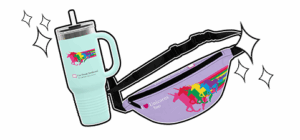

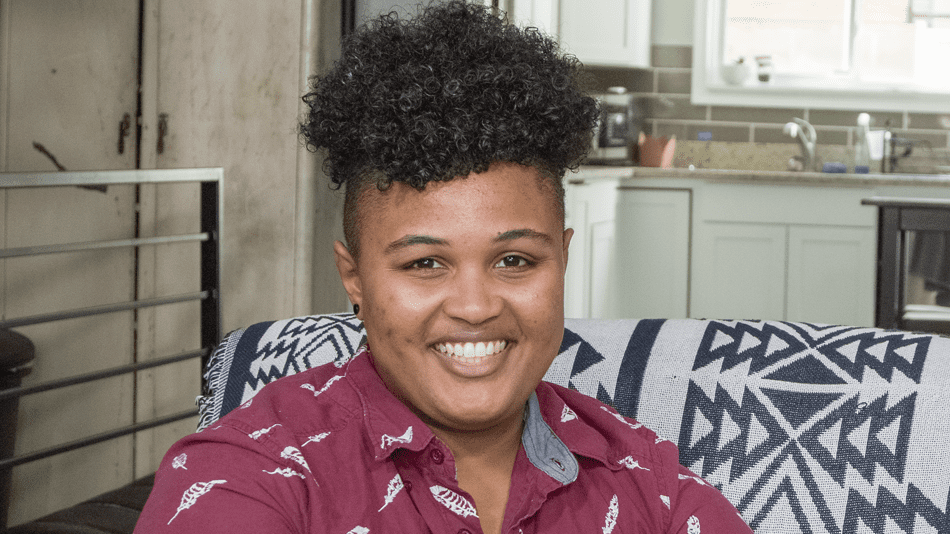

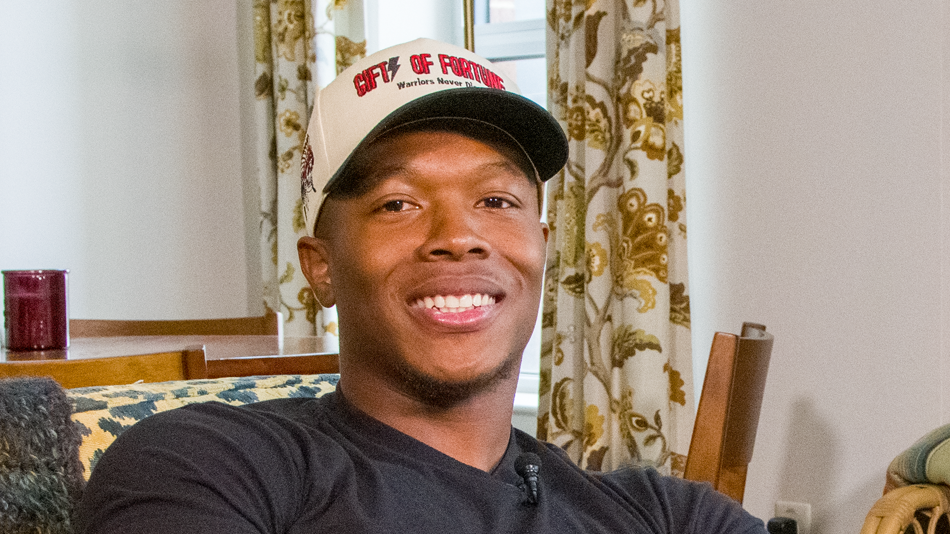
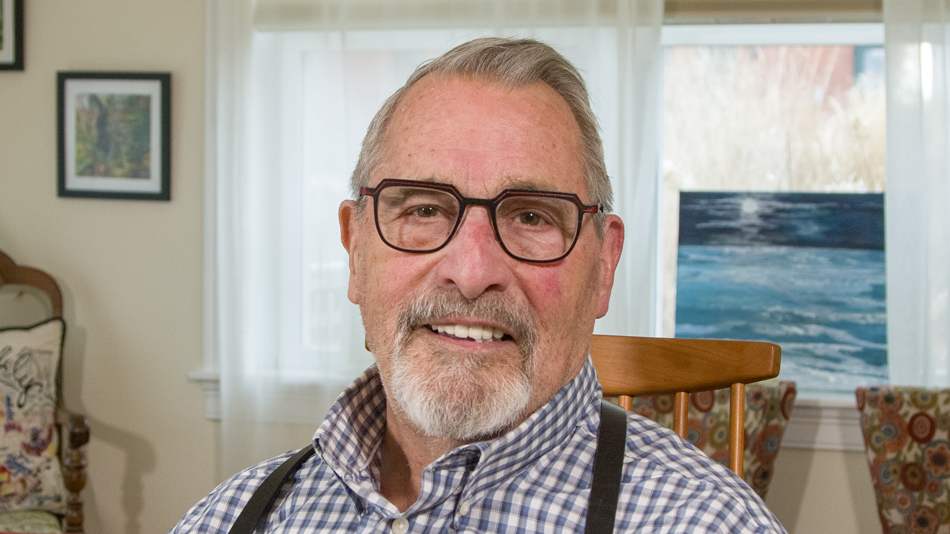
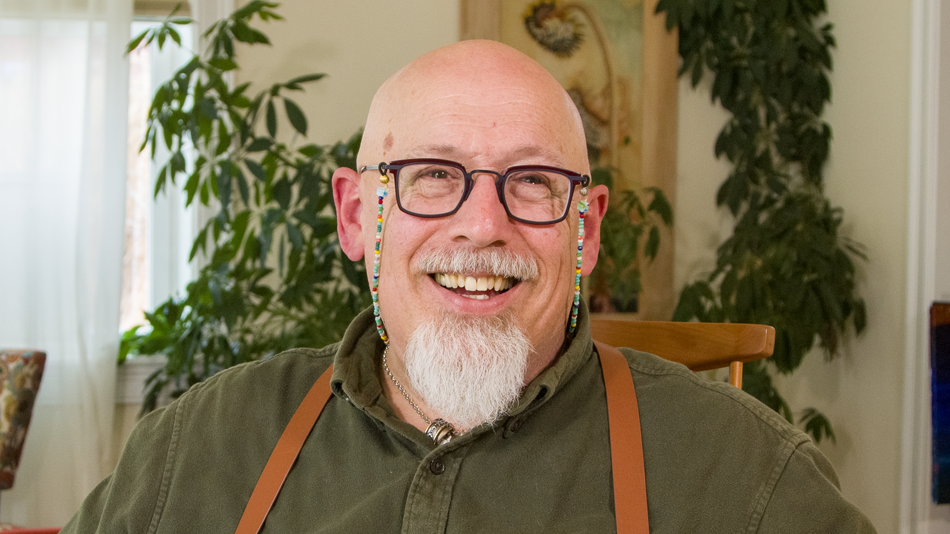
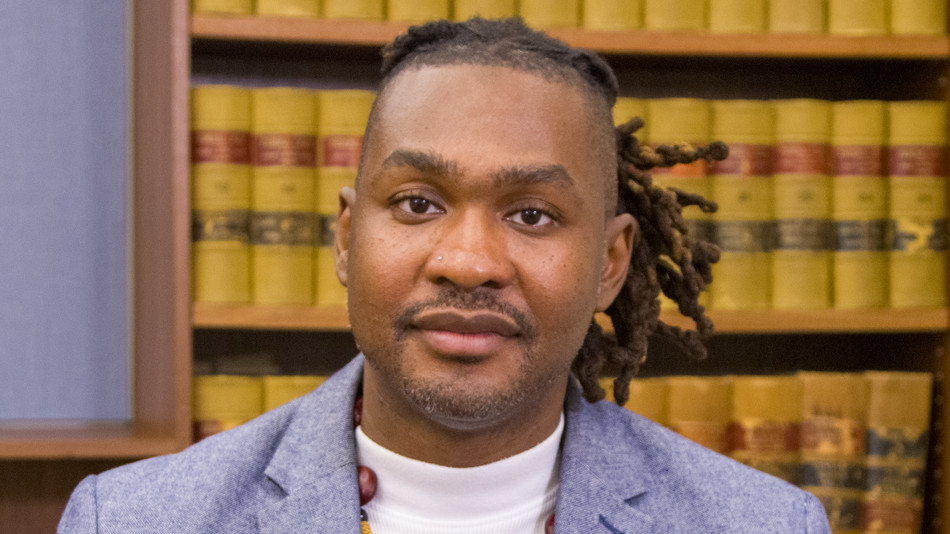
Share